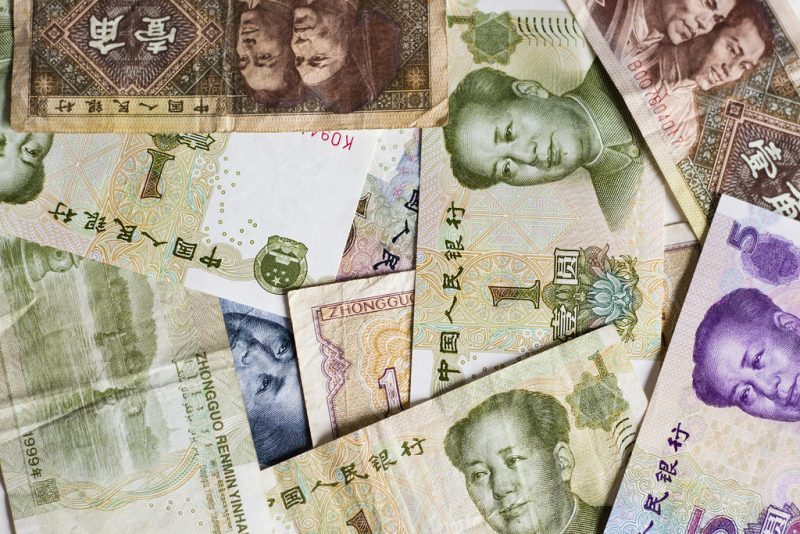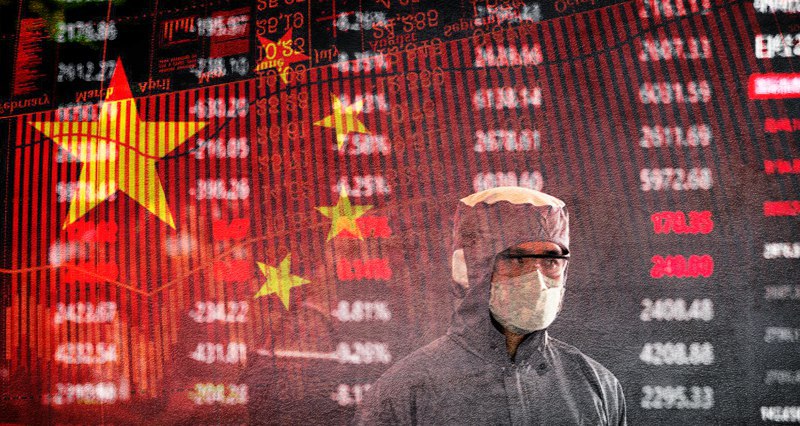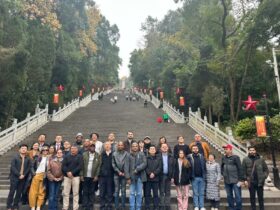Neoliberalism has gone bankrupt, yet the screams of ”we shall expropriate” still echo within its media sanctuaries. Meanwhile, Donald Trump’s ”America first” policies are deeping in response to the collapse of neoliberal globalization, and Europeans are increasingly looking toward the East for solutions.
In the wake of the economic fallout resulting from the coronavirus outbreak, Atlanticist ideologues have responded by saying ”well, China’s economy is also sinking’!’ hoping to cover up the fact that capitalism as we know it is collapsing. Media sources are harping on the fact that the coronavirus outbreak has damaged China’s economy badly, projecting that the country’s growth rate will fall by 2% as a result. (Reuters, Pantheon Economics Fung Business Intelligence)
Our “Westernized economists” are spreading similar propaganda without applying any critical thought. The fundamental delusion of those who speculate about China’s economy is believing that China can be understood in the same way as a liberal economy, ignoring the fact that it is a socialist country organized on principles of central planning and populist governance.
CHINA: OUR GROWTH AIM HASN’T CHANGED
Despite claims that China is facing an imminent economic downturn, the Chinese government remains confident. On 1 February 2020, the People’s Bank of China (the country’s central bank) stated that the effect of the outbreak on the Chinese economy will be temporary, and that the fundamentals of long-term positive and quality growth have not changed. The Chinese State Council announced a comprehensive and detailed package to eliminate the negative effects of the outbreak. Creative precautions have been implemented in order to maintain China’s central role in the world production chain, to help small and medium enterprises overcome related problems and to guarantee the purchasing power of the people goes unharmed. Several countries in the West which had debated shifting production away from China altogether at the beginning of the outbreak have since become reliant on Beijing to fix their economies.

GROWTH DEPENDS ON THE DOMESTIC MARKET
Let’s take a close look at China’s growth pattern with reference to the “Statistical Communiqué of the People’s Republic of China on the 2019 National Economic and Social Development” of the China National Statistics Bureau.
China’s economy grew at the rate of 6.1% in 2019; the state had projected 6% growth, but the growth was faster than expected.
In 2019, China’s economy was constituted by the service industry at around 54%, heavy industry at 39% and agriculture at 7%, with the service industry continuing to increase steadily every year. The main source of economic growth in China was consumption expenditures at a rate of 58%. The rate of investment expenditure was 31%, while foreign trade was 11%.
With the 11th Five-Year Development Plan implemented by China in 2006, the foundation of economic development was turned from a model of growth depending on export to one where development is dependent on the domestic market.
Some are saying that we can be sure China’s economy will be hurt by coronavirus because of what happened during and after the SARS outbreak in 2003. However, China has actively worked to annihilate the fragility of the economy during the last three ”Five-Years Plans,” learning from the experience of the earlier pandemic.
The share of foreign trade in relation to economic growth in the last 15 years dropped 11% from around 70%, gradually and deliberately. China is now the biggest exporter and the second biggest importer on the globe.
LABOR PRODUCTIVITY ENHANCES PROSPERITY
China’s population grew to over 1.4 billion in 2019, with 60% of the population living in urban areas. The working population is 775 million, i.e., half of the country. The most remarkable aspect of 2019’s economic and social indicators is the increase in overall labor productiveness.
Compared to the previous year, labor productivity increased by 6.2% while labor productivity per capita increased $16.500. A general high level of education, discipline and positive spirit among the workforce have all helped enhance and ensure productivity.
During the last ten years under the leadership of Xi Jinping, many more people have escaped poverty or come under the protection of the state based on redistribution of the country’s wealth. According to the same data, disposable income per rural house increased 9.6% compared to the previous year. Relative to price factors, it increased 6.2% in real terms. At the same time, the income of workers coming from rural areas to cities (the pinnacle of China’s exploitation of labor according to Western pseudo- Marxists) saw an increase of 6.5% compared to the previous year.
There was also improvement regarding the elimination of imbalances between regions in China:
the developed eastern region saw a 6.2% growth rate, while in the most undeveloped western regions it was 6.7%. In Middle China, the fastest-developing area, the rate of growth was 7.3%. China’s goal of obtaining a ”moderate and prosperous society” depends on the growth of the domestic market. China is different from the West in large part because overall prosperity is carried over to the country’s poor and working class.
ELECTRONICS AND ECOLOGY
Defined as the new strategic sectors in China, biotechnology, eco-friendly new materials, new energy systems and the production of electrical vehicles constitute 14% of the industry, an increase of 9%.
In 2019, R&D expenditures in China reached $315 billion, which constitutes 2.2% of the GDP.
The number of stable broadband internet users increased by 41.90 million, reaching a total of 449.28 million. The traffic of mobile internet in 2019 rose by 122 billion gigabytes, a 71.6% increase.
In 2019, electronic trade reached $1.5 trillion, an increase of 16.5%.
CHINA IS NOT SLOWING DOWN
In one of his articles, Nobel prize winning Canadian-American economist Michael Spence determined that China’s economy would continue its upward trend: “one under-appreciated source of strength is the rapid expansion of China’s digital economy. As much as 35.3% (though probably closer to 25%) of all Chinese retail sales now occur online; mobile Internet penetration is very high and rising; and China’s mobile-payments systems are the world’s most advanced. Because most people and businesses are connected and active online, it is easy to generate large amounts of data that, thanks to artificial intelligence, instantly expand the scope and effectiveness of digital ecosystems.”
The data shows that China will be able to maintain its growth thanks to its rising market independence, innovative economy and governance relying on the people.
China’s leadership is poised to turn the coronavirus crisis into an opportunity by mobilizing the strength of the planned economy.

















Leave a Reply